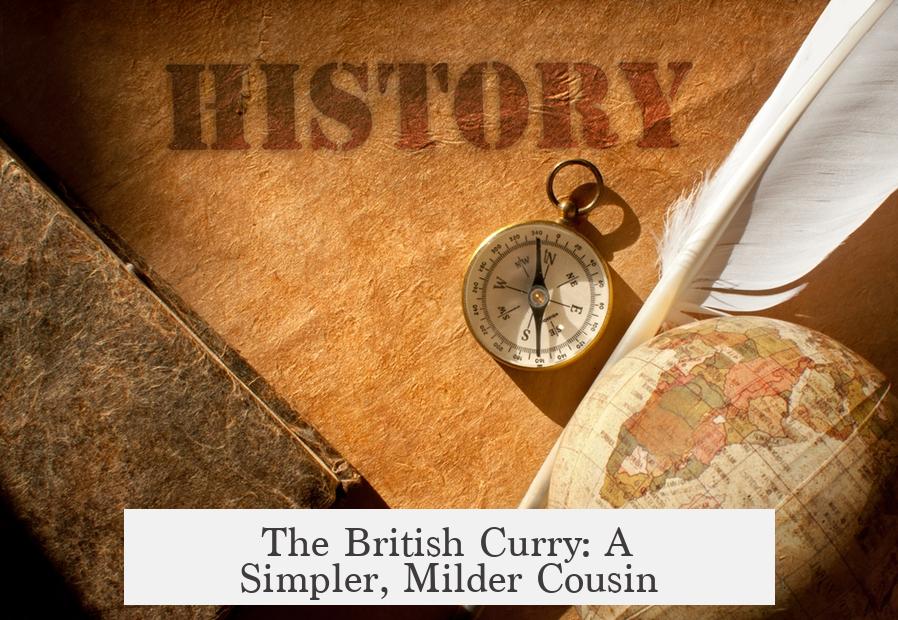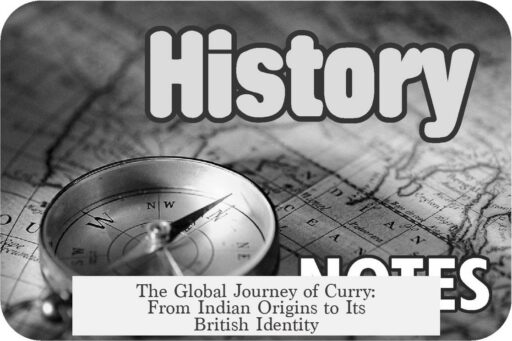The history of curry is complex, with the term carrying several meanings and evolving through cultural exchanges rather than stemming from a single invention.
First, “curry” can mean the leaf from the curry tree, native to south India and Sri Lanka. The leaf, known locally as the sweet neem, has a citrusy and earthy flavor and features prominently in south Indian cooking. This culinary use predates British involvement in India and remains mostly regional, limited mainly to south India and parts of the west.
Second, “curry” broadly refers to a generic spiced dish, particularly from the Indian subcontinent and Southeast Asia. This meaning reflects the variety of heavily spiced dishes characterized by complex blends of herbs and spices, rather than a precise recipe.
Third, curry powder refers to a spice mix created by the British to approximate Indian flavors at home. There is no standard curry powder in India, where different regions use distinctive combinations of spices suited to their cuisines. Various British companies marketed their own versions of curry powder during colonial times to recreate Indian dishes, but this was a British adaptation rather than an Indian culinary tradition.
In India, the notion of a uniform “curry” does not exist. Instead, Indian cuisine is regionally diverse, with many dishes using hundreds of unique spice combinations. There are no general-purpose curry powders; rather, specific spice blends like korma, biryani, or dal masalas are used to create particular dishes.
The typical curry known in Britain differs significantly from Indian regional dishes. British curry tends to simplify spice usage and decrease heat, making it milder to suit Western palates. The style most closely resembles north Indian Mughlai cuisine, particularly korma, which uses dairy and spices but differs in preparation and flavor from its Indian counterpart. British curries often feature a strong dairy presence, while Indian versions rely on ghee infused with spices for flavor and tend to be redder rather than yellow.
British versions like Chicken Tikka Masala illustrate how Indian dishes were modified overseas. Allegedly invented in Glasgow, the dish combines tandoori chicken with a creamy, spiced sauce created on demand when a customer requested sauce for otherwise dry chicken tikka. This innovation exemplifies the adaptation of Indian dishes to British tastes and ingredient availability, such as the limited access to fresh mangoes or certain spices and the affordability of meats like chicken and lamb.
These adaptations respond to differences in ingredient availability and consumer preferences. For example, fresh green mangoes, common in India, are rare in the UK, influencing recipe modifications. Meanwhile, meats like lamb and chicken are more accessible in Britain than in many parts of India, further shaping these dishes.
In this light, curry as known in the West is very much a British creation, rooted in a western adaptation of north Indian cuisine rather than an exclusively Indian invention. However, this does not diminish the Indian origins of the spices, leaves, and culinary traditions that inspired it. The curry leaf remains an authentic Indian ingredient, while the idea of “curry” as a unified spice mix or dish is an external interpretation shaped by British diners and cooks.
- Curry leaf is indigenous to south India and Sri Lanka; used regionally for thousands of years.
- “Curry” as a spiced dish is a broad term, not a singular Indian recipe.
- Curry powder is a British invention, invented to recreate Indian flavors abroad.
- India has no standardized “curry”; diverse regional cuisines use specific spice blends.
- British curries simplify and milden Indian dishes to suit Western tastes.
- Chicken Tikka Masala likely originated in Britain, not India.
- Curry’s Western form reflects local ingredient availability and consumer preferences.
- Curry is a British adaptation of Indian culinary concepts, not purely Indian.
What is the History of Curry? Who Invented It? How Did It Spread? Is It Really a British Thing and Not Indian?

Is curry really a British invention rather than Indian? The direct answer is: curry as a spiced dish originates from India’s vast culinary tradition, but the word “curry” and the concept of curry powder are British inventions that adapted and simplified Indian cuisine for Western tastes.
Sounds complicated? Stick with me. Let’s unravel this flavorful mystery one spice at a time.
The Many Faces of “Curry”
First off, “curry” isn’t just one thing. It’s a word with multiple meanings in different contexts.
- Curry Leaf: This is a specific herb from the curry tree found in South India and Sri Lanka. Known locally as the sweet neem tree, it has a unique citrus-y, earthy flavor. It’s been used in South Indian cooking for thousands of years and prized for that very reason.
- Spiced Dish: In the Indian subcontinent and Southeast Asia, “curry” broadly describes various dishes with spiced gravies or sauces. But here’s the kicker: India itself doesn’t have a single standard curry. Instead, there are hundreds of regional recipes, each using different spice blends and techniques.
- Curry Powder: Contrary to many beliefs, curry powder isn’t an ancient Indian spice blend—it’s a British creation. The British developed curry powder during colonial times to recreate Indian dishes back home without having to buy dozens of separate spices.
Where Did Curry Come From?
The use of curry leaves in cooking is an ancient South Indian practice, deeply woven into local cuisines. But the idea of “curry” as a single dish or spice mix is way more modern.
When the British East India Company started colonizing India, the British soldiers and officials came across a rich variety of flavorful spiced dishes. They lumped all these under the single term “curry.” This was an oversimplification, but it stuck.
British cooks wanted to replicate these complex flavors at home. So, they created curry powder as a convenient spice mix. This powder was sold by different companies, each with its own take on “Indian” spice blends. The truth is, there was no one recipe.
Why Don’t Indians Speak of “Curry”?
If you travel to India, ask for “curry” and you’ll probably get a puzzled look. That’s because Indian cuisine is diverse. Instead of generic curry, there are vibrant dishes like rogan josh, vindaloo, korma, masala, and biryani, each with its distinct spice ratios and cooking methods.
In fact, Indian cooks usually buy or make specialized spice mixes for each dish. For instance, “korma spice mix” or “biryani masala” are common, but “curry powder”? Not so much.
The British Curry: A Simpler, Milder Cousin

As Indian cuisine traveled to the West, it underwent a transformation. British curries tend to be milder, easier on the tongue, and often richer in dairy—like cream and yogurt—that softens the heat.
Take the typical British curry: it’s often modeled on North Indian Mughlai dishes, especially the korma, which uses creamy, spiced sauces. But whereas the authentic Indian korma relies heavily on ghee infused with spices—giving it a reddish-brown hue—the British version relies more on dairy-based sauces and a yellowish tint thanks to turmeric.
And it’s not just about taste; local availability of ingredients shaped these adaptations. Fresh green mangoes, frequently used in India, are hard to find in the UK or USA. Meanwhile, meats like chicken and lamb are more affordable in the West compared to India, influencing recipe tweaks.
Chicken Tikka Masala: The Quintessential British Curry?
Curious about the most famous “Indian” dish in Britain? Chicken Tikka Masala is sometimes called Britain’s national dish, but this story shows how deeply British curry is.
Legend has it that in Glasgow, someone ordered Chicken Tikka (chunks of grilled chicken) at an Indian restaurant but found it too dry. The chef whipped up a creamy sauce from yogurt, spices, and tomato to please the customer. Voilà! Chicken Tikka Masala was born—a perfect example of Indian spices meeting British tastes.
Tracing the Spread of Curry Around the World
Beyond Britain and India, curry’s story is a global journey. Southeast Asia—places like Thailand and Malaysia—has its own curry variations, influenced by Indian cooking but evolved with local ingredients like coconut milk and different chili varieties.
In Japan, curry is mild and thick, often served as a comforting stew over rice. The Caribbean has its spicy and vibrant curries, tracing back to Indian indentured laborers who brought their culinary knowledge with them.
So curry isn’t just Indian or British; it’s a global phenomenon that constantly reinvents itself.
Wrapping It Up: What Can You Take Away?
Curry as a concept? Definitely Indian. But the word “curry” and curry powder? Definitely British inventions. The British simplified and adapted a vast variety of Indian dishes into something more accessible to their palates and ingredient supply.
Here’s a spicy thought: the next time you slurp a comforting bowl of curry, remember you’re tasting layers of history—Indian culinary roots and British colonial influence melded into your dish.
Want to explore authentic Indian cooking beyond curry powder? Try finding regional spices and building a dish from scratch. Or taste the nuances across different Indian states—each has a treasure trove of recipes.
If you’re curious about cultural adaptations, compare a British-made curry powder blend to homemade Indian garam masala. You’ll notice the difference instantly: one is a simplified snapshot, the other a complex tapestry.
Final Spice: Is It Really a British Thing?
Yes and No.
Yes, because the very name “curry” and the idea of “curry powder” were coined by the British. Many “curries” in the West—including chicken tikka masala—are products of British innovation.
No, because the basic foundation—spices, cooking techniques, and the diversity—are profoundly Indian.
In essence, curry lives at the crossroads of cultures, a delicious example of culinary fusion shaped by history, geography, and human tastes. And that’s what makes it endlessly fascinating—and tasty.
“Chicken Tikka Masala was allegedly developed in Glasgow after a customer requested sauce with his Chicken Tikka because it was too dry—a story that perfectly illustrates British adaptation of Indian cuisine.”
So next time someone says “curry is British,” smile and say, “Well, it’s complicated—just like the curry itself.”
What are the origins of curry as a dish?
Curry as a spiced dish originated in the Indian subcontinent. The British encountered various spicy Indian dishes and coined the term “curry” to describe them. It is a broad term rather than a specific recipe in India.
Did the British invent curry powder?
Yes, curry powder is a British invention. The British tried to recreate Indian flavors at home and created their own spice blends sold as curry powder. These blends vary greatly and are not traditional Indian spice mixes.
Is curry originally an Indian or British concept?
The concept of curry as a single dish is more British. In India, there is no unified dish called curry; instead, many regional dishes have diverse spice combinations. The British adapted and simplified north Indian food for their taste.
How did British curry dishes differ from Indian ones?
British curries tend to be milder and use fewer spices than Indian dishes. They often include dairy flavors, unlike traditional Indian dishes where ghee infused with spices is common. Dishes like Chicken Tikka Masala were created in Britain for Western palates.
Why did curry recipes change when they spread to the West?
Curry dishes adapted in the West due to ingredient availability and local tastes. For example, fresh mangoes are rare in Britain, so dishes emphasize meat more. Recipes were modified to suit Western preferences and available ingredients.




